The old and the new blend effortlessly in this vibrant metropolis famous for its night markets, with sleek skyscrapers tucked harmoniously next to traditional temples and tea houses.
But what we like best about Taipei is its authenticity: it’s a living, breathing city that hasn’t quite landed on the main tourist circuit just yet. The result is how travel should be: an immersive experience in a culture not your own.
This guide details how to best spend 36 hours in Taiwan’s capital city. It’s barely enough to scratch the surface, and the more time you spend in Taipei, the more you realize how much more there is to see.
However, many Westerners pass through Taipei as a layover on their way to other parts of Asia, making it a great opportunity to leave the airport and explore the city.
You won’t regret it, and a short time in Taipei will leave you eager to return for more.
Jump to:
- Getting Around Taipei
- Overcoming the Language Barrier
- 36 Hours in Taipei: What to Do and Where to Go
Getting Around Taipei
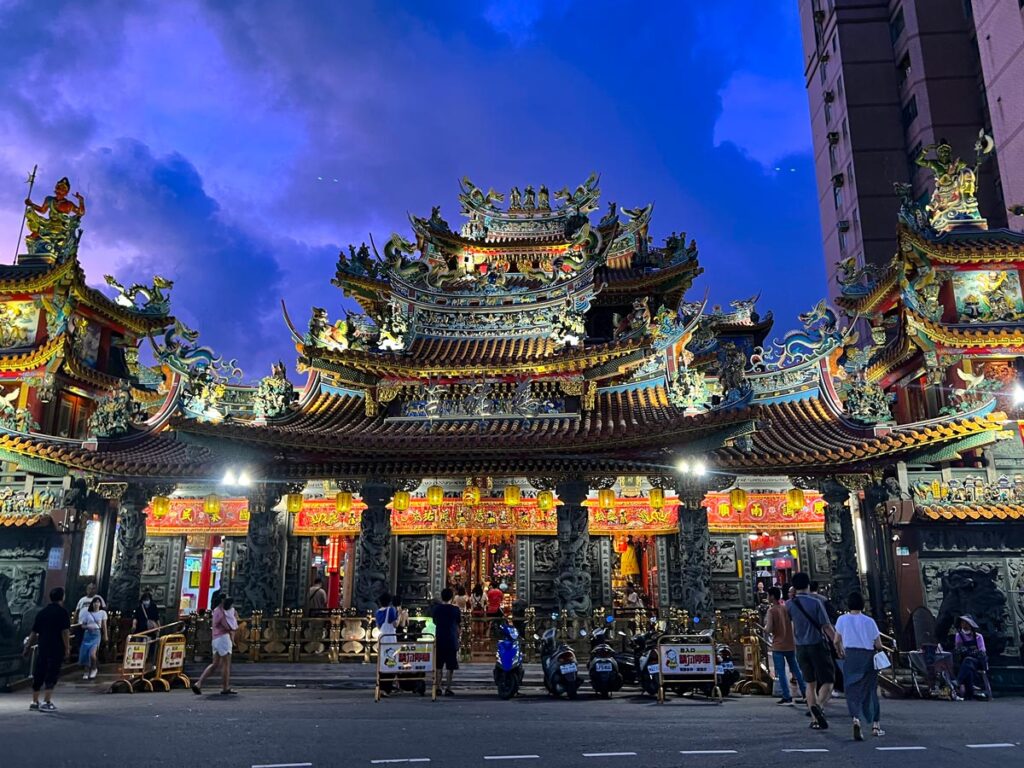
Taipei has a clean, efficient public transit system that can get you anywhere you need to go. Even Western tourists who don’t speak Mandarin are able to easily navigate the city with minimal headache. The Metro also maintains a detailed English language guide, complete with route map and time tables, first and last train info, and more to help you plan your itinerary.
However, if you’re short on time in Taipei and have the ability, we would highly recommend using Uber to get around. Uber is extremely prevalent throughout the city, and saves valuable time when you can be picked up and dropped off door-to-door. And because you set your destination in the app prior to getting picked up, there’s no language barrier needed to overcome with your driver.
We used Uber while in Taipei and found it a luxury worth paying, as it saved a lot of time that would have otherwise been taken up on public transit. The Uber app is the same as any other country, and prices are comparable to rates in other first-world cities. You’ll just need cell phone data or a WiFi connection to call a car when you’re ready.
Overcoming the Language Barrier
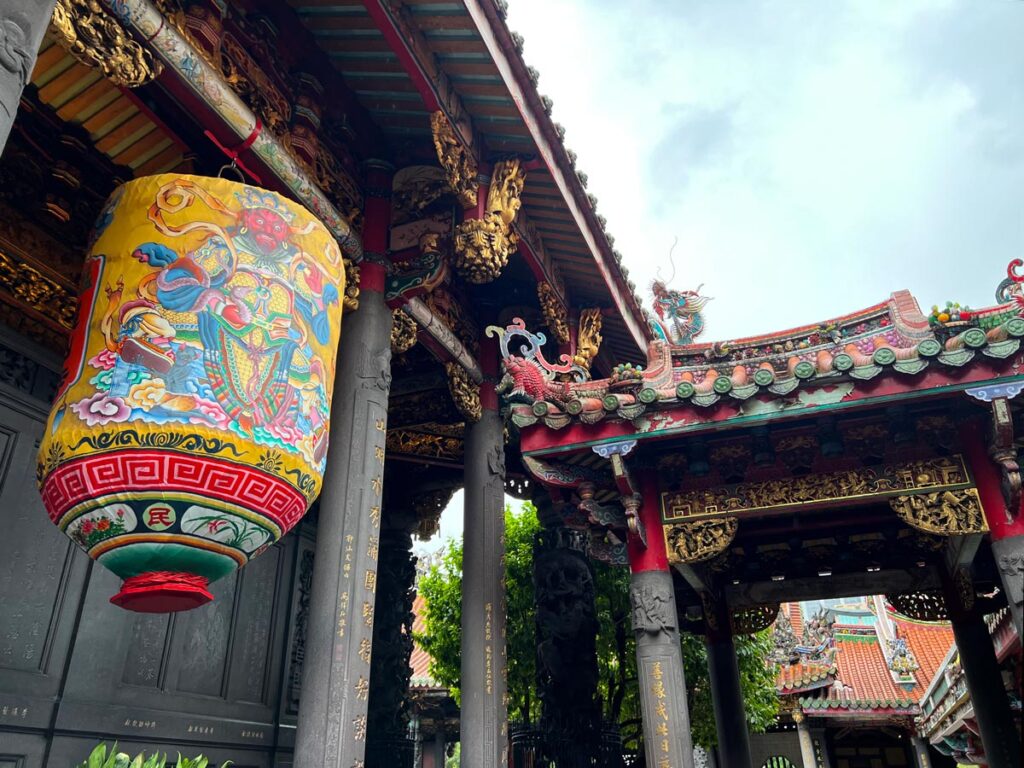
Despite being the lingua franca in many parts of the world today, English is not always prevalent in Taipei. As with most cultures, you’ll find that the younger people typically have some grasp of English, while it’s hit-or-miss among those middle aged or above. We honestly found the authenticity of it refreshing, as an occasional language barrier forces you to adapt into the local culture.
Memorizing just a few words of Mandarin can help immensely. If you learn anything, remember ni hao (hello) and xie xie (thank you, pronounced “she she”).
A friendly smile and ni hao, before gesturing to the item you’d like to purchase, and concluding the exchange with a xie xie will easily get you through most interactions.
36 Hours in Taipei: What to Do and Where to Go
Climb Elephant Mountain for Unparalleled Views
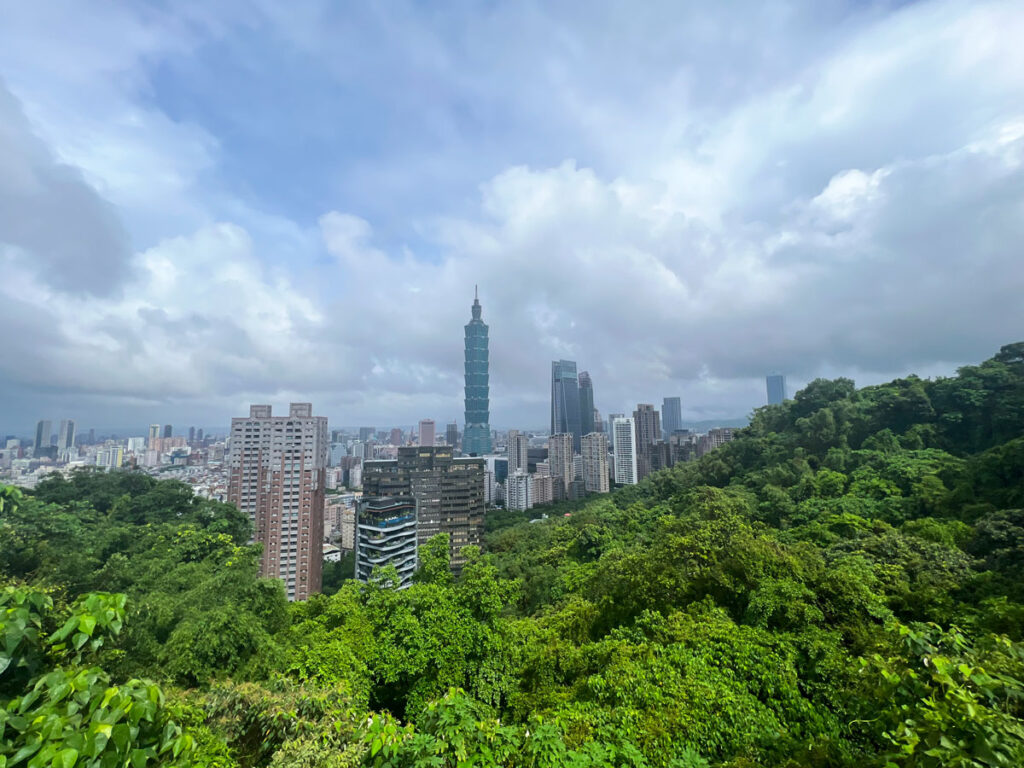
Elephant Mountain, or the Nangang District Hiking Trail, is a forested oasis in the heart of urban Taipei. Located just a 0.85 km walk from Taipei 101, it’s easily accessible but feels a world apart. Footpaths lead upwards through jungle terrain to a series of first-rate viewpoints. For your efforts, you’ll earn a bird’s-eye view of the Taipei skyline, with Taipei 101 rising prominently in front of you.
Some of the more popular viewpoints include Firework Lookout, Photographer Point, and Elephant Peak. And for a different view on the descent, follow the signs to the Shiliao trail. Shiliao winds through lush forest, with thick tropical vines accented by a cacophony of morning birds. It’s hard to believe you’re still in urban Taipei!
The full hike is about 1.5 kilometers, with plenty of offshoot trails to extend your total distance if you so choose. With humidity during much of the year, it’s best to complete Elephant Mountain in early morning, before the heat of the day. Trailhead directions here.
Visit Chiang Kai-shek Memorial Hall
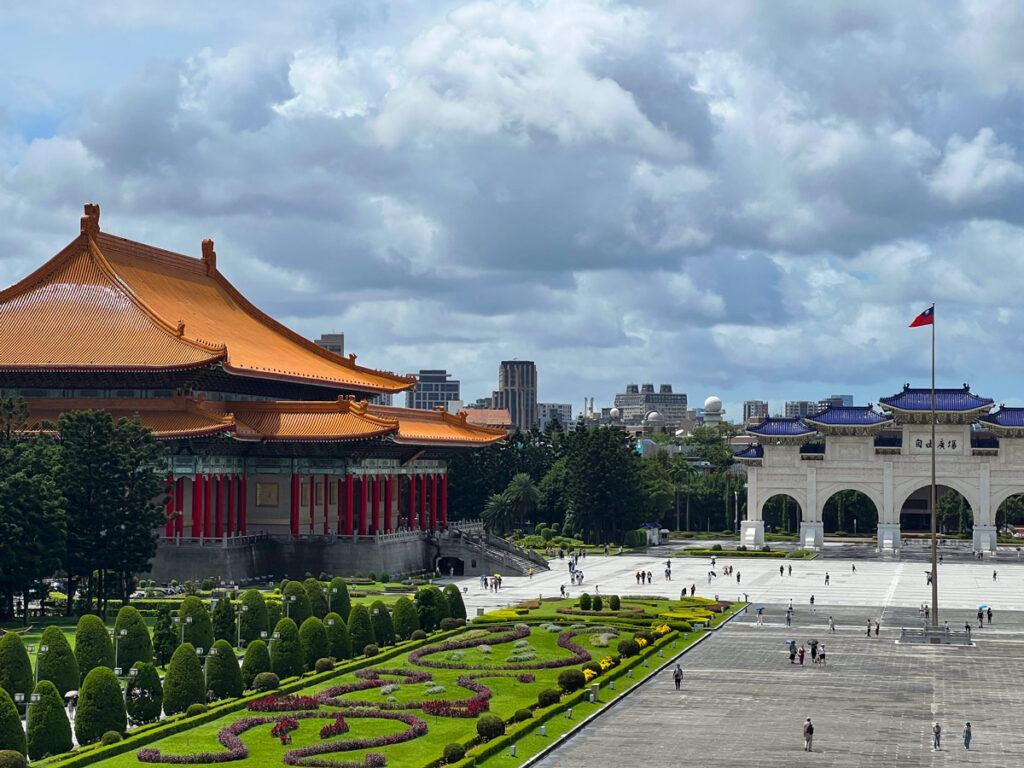
This national monument dedicated to the former president of Taiwan is an expansive complex in the heart of Taipei. Besides the main hall, there are multiple galleries and exhibits on Taiwan’s history, manicured gardens and pavilions, and a small lake. It feels important to visit, and grow your understanding of Taipei’s complex history. The hall’s role in 20th century Taiwanese politics extends beyond Chiang Kai-shek, as it was also the site of numerous pro-democracy demonstrations and events.
You can stroll the grounds in as little as 30 minutes, or take additional time to visit the museum galleries and watch the regular changing of the guard in the main hall.
Explore the Contrasts of Historic and Hip in the Ximending District
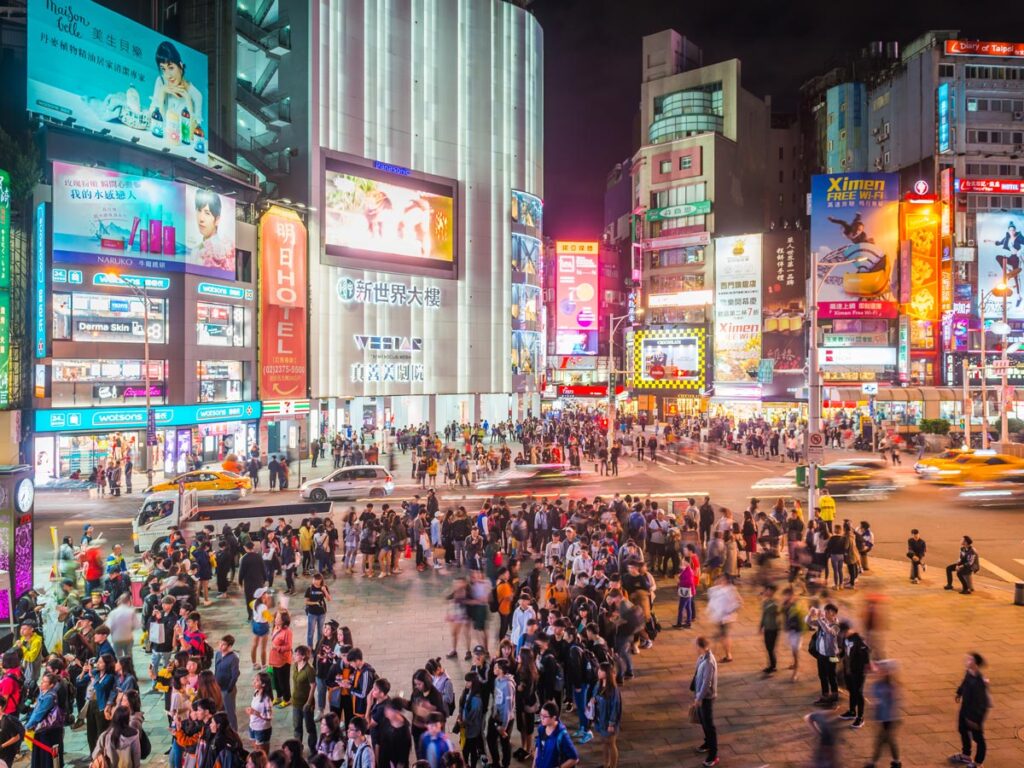
Ximending is a neighborhood of opposites: old and new, traditional and trendy. The city’s oldest temples reside here, along with a flashy pedestrian shopping district that is Taipei’s version of Times Square or Shibuya. Enjoy popping into Ximending’s famous shopping square (directions here) with restaurants, bars, and stores that are always hip and often quirky.
A few blocks away, you’ll find the historic side of Taipei. Longshan Temple is worth a visit, as the oldest and most famous Buddhist temple in the city. Its beautiful architecture includes brightly inscribed pillars, ornate dragons and statues, while a manmade waterfall and koi pond compliment the gardens outside the entrance. Directions.
Two blocks down the road from Longshan Temple is the Bopiliao Historic District. This series of 1800s industrial brick buildings are slowly being renovated into a trendy pedestrian alley, with galleries that honor the neighborhood’s history. Bopiliao still feels up and coming (it will take a few more years to truly come into its own) but it’s worth checking out if you’re in the neighborhood. Directions.
Finally, if you’re not tired of temples just yet, you can also visit Qingshui Temple, just up the road. It’s a smaller version of Longshan, built in the same era, and is a peaceful little spot. Similar architecture, but without the crowds that Longshan draws. Directions.
Shop and Stroll the Da’an District’s Trendy Yongkang Street
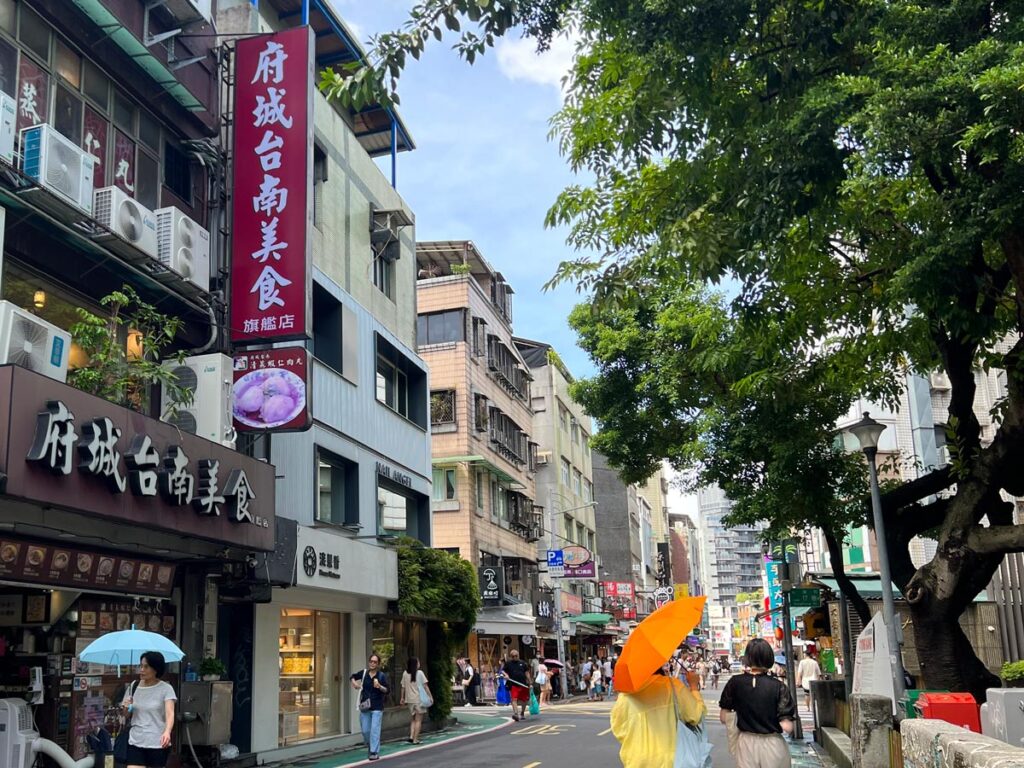
This was one of our favorite neighborhoods in Taipei – it’s similar to Ximending, but without the gaudy neon. Yongkang is filled with cute boutiques, home goods stores, and chic cafes, and you can easily pass an hour or two getting lost in its charming alleyways. In fact, TimeOut recently rated it #4 on their list of “coolest streets in the world.”
Tea to Tea is located here (more on the tea house below), as well as Smoothie House and its famous mango shaved ice bowls. Beer aficionados will enjoy checking out Zhangmen Craft Brewery.
Sample Taiwanese Tea Culture

Tea lovers will go gaga in Taipei, where the beverage has filtered into every corner of society.
Boba
Boba was invented here, and you’ll find boba shops on every corner of the city. Both Hanlin Tea Room and Chun Shui Tang claim to have invented the tapioca beverage, and you can’t go wrong at either.
However, we also really enjoyed Tea to Tea in the Yongkang district. As a more refined tea house, they avoid the standard sugary add-ins of varying flavors, instead leaning into traditional fine tea for the base. You can still select varying levels of sweetness, but the result is a boba that somehow feels more elevated and pure. You can also purchase a series of classy tea tins, gift boxes, and accompanying sweets. Directions.
Traditional Tea Tasting
For a cultured dive into Taiwanese tea, head to one of the many tea houses around town for a traditional tasting. Eighty-eightea Rinbansyo is housed in a 100+ year old former monk’s home, with tea served in the traditional Japanese style. The menu offers a range of oolong, Alishan, jasmine, green, and more, along with small bites. You won’t be rushed, and can easily pass an hour or two savoring the genteel experience. Directions.
Wolf Tea is another Taipei gem, with a small, humble setting that belies the quality of its product. The storefront doubles as a boutique shop with an upstairs tasting room, and sells superior loose leaf teas along with whimsical serveware and accessories. Staff will happily guide you through a tasting experience, personalized to your preferences. Directions.
Maokong Tea Plantations
Devoted tea aficionados can also make the pilgrimage to the many tea plantations just outside of Taipei. Take the brown line of the Metro to the Maokong Gondola Station, which you can then ride up into the verdant hillsides that produce some of Taipei’s finest teas. There are many family-run tea shops and hiking trails in the area, as well. One of the most well-known spots in Yao Yue Teahouse, with an open-air patio that looks out onto the surrounding valleys. Amazingly, they’re open 24 hours a day. Directions.
Dive into Taipei’s Night Market Scene
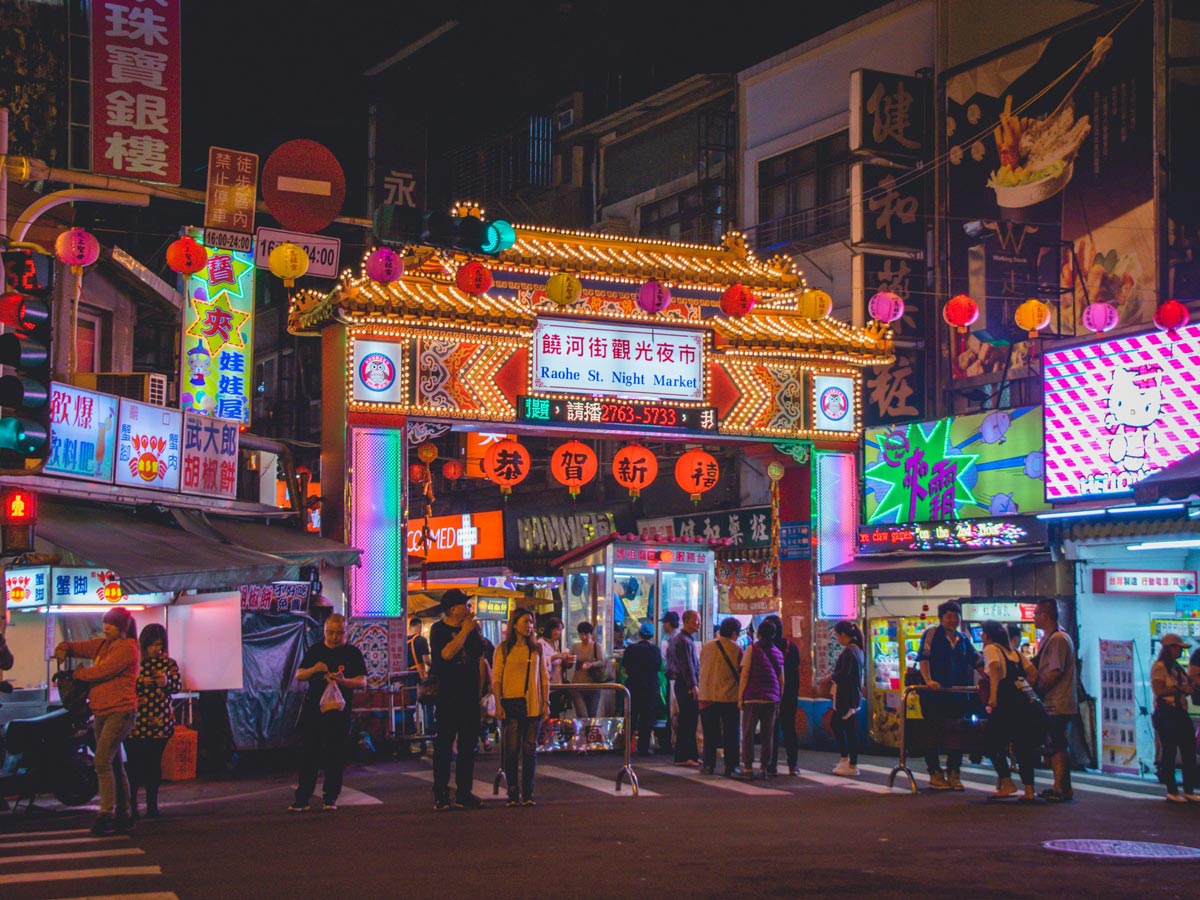
Taipei is famous for its night markets, which are Taiwanese culture at its fullest. Bright lights, buzzing crowds, and the sweet and tangy aromas wafting from nondescript stalls are an immediate assault on the senses.
While each neighborhood has its own night market of varying size, these are a few of our top recommendations:
Linjiang Night Market
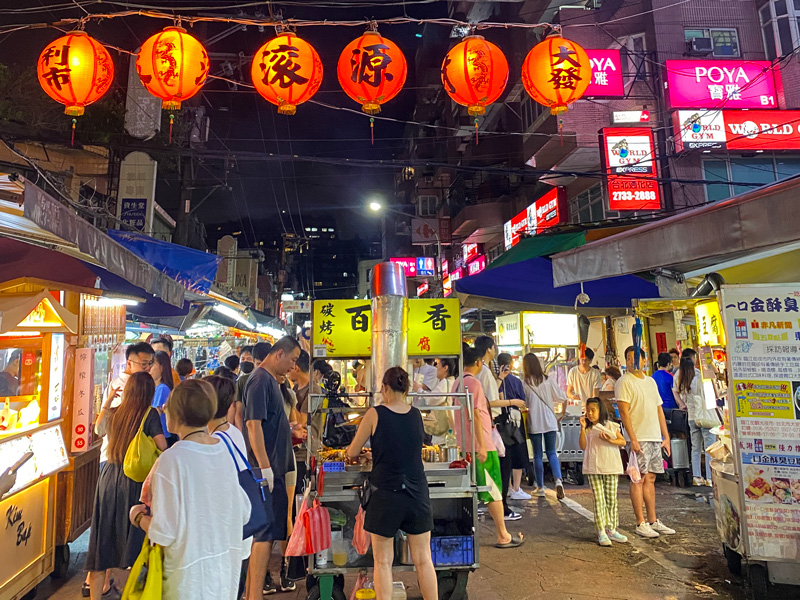
Located halfway between Taipei 101 and the Da’an District (approximately a 1 km walk each way), Linjiang doesn’t make the tourist lists as often, and consequently has a more “local” feel to it. As a result, this is probably our favorite of the multiple markets we’ve experienced in Taipei.
Be sure to visit the following stalls that have earned a nod in the Michelin Bib Gourmand guide:
- Lo Chi Hsiao Chao: a humble stall off the main drag. Get the clams, which come in a light broth with Thai basil, peppers, and ginger. It’s hard to believe so much flavor can be coaxed out of these few simple ingredients. Directions.
- Liang Chi Lu Wei: not a stall so much as a literal cart. It’s a “choose your own adventure”, where you’ll grab a plastic basket and select the meats and vegetables you want from a communal tray. When you reach the front of the line, the cook will add sauce and whip up your selection into a quick stir fry that’s pure comfort food. Directions.
- Yin Pin Yuan: dessert rice balls are another night market staple, and this spot serves them perfectly. You can get hot or iced, with various sweet fillings. We like the sesame and peanut butter fillings, personally. Directions.
Raohe Night Market
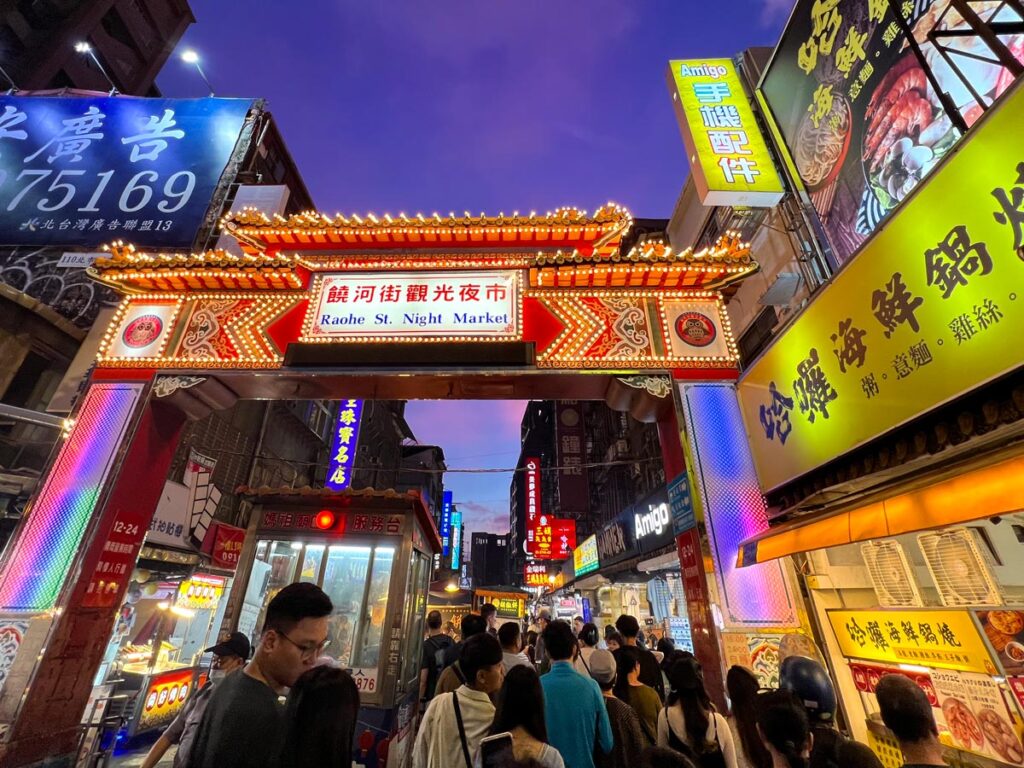
Stretching along the south bank of the Keelung River, Raohe has the highest concentration of Michelin stalls of any night market in Taipei.
A few of the top Michelin spots include:
- Fuzhou Pepper Buns: thick, doughy buns, stuffed full of tender pork and peppers and served piping hot. Directions.
- Chen Tung Pork Rib Soup in Medicinal Herbs: exactly as it sounds. Directions.
- A Kuo Lu Wei: duck wings and baby corn. Michelin also recommends the crispy intestines, if you’re up to it. Directions.
- Hongshao Beef Noodle Restaurant: Michelin highlights the beef noodles and beef entrails soup, but there are plenty of options for less-adventurous eaters. Directions.
Shilin Night Market
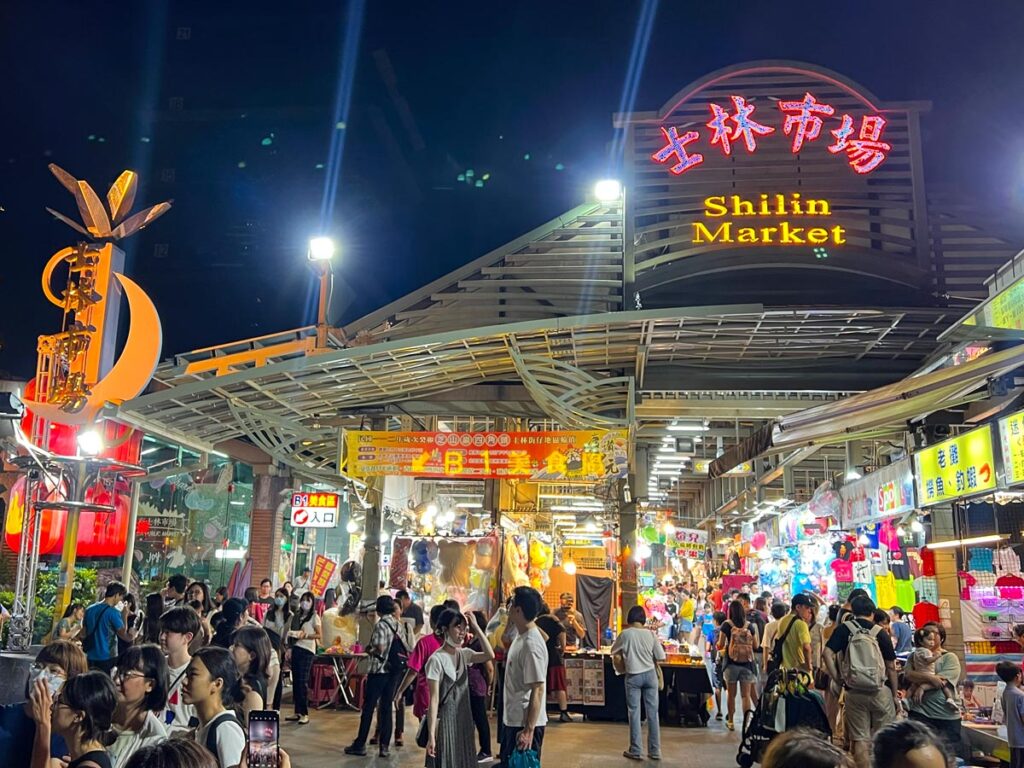
Taipei’s most famous market is also the oldest, going back over 100 years. Shilin is located in a bustling commercial district, across the river from most of the other tourist destinations. This was actually our least favorite of the night markets we visited in Taipei. Not that we didn’t like it, only that it felt more touristy and less authentic than the others. However, because it’s considered “the” market to experience in Taipei, we’re keeping it on the list.
Shilin is expansive, with mazes of alleyways selling not just food but clothing, shoes, and novelty items. There’s even a large arcade with carnival games, which families with children enjoy.
While at Shilin, be sure to check out the three stalls that made the Michelin Bib Gourmand:
- Chung Chia Sheng Jian Bao: steamed bao buns, with savory melt-in-your-mouth pork, marinated in delectable sauce. Directions.
- Good Friend Cold Noodles: the noodles are served chilled, in a rich sesame sauce with sliced cucumbers. Directions.
- Hai Yu Pork Ribs: another pork rib herbal soup similar to that at Raohe. Directions.
